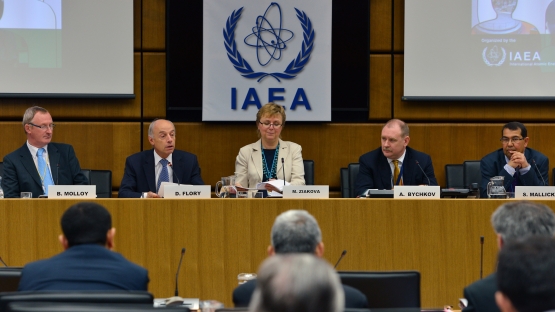Good progress has been made in human resource development in the last few years, an IAEA Conference concluded today. Participants also highlighted that capacity building continues to be important in ensuring the continued availability of competent personnel for the safe, secure and sustainable use of nuclear power. These were among the major conclusions of theInternational Conference on Human Resource Development for Nuclear Power Programmes that closed today in Vienna, Austria.
The week-long Conference focused on the global challenges of capacity building, human resource development, education and training, nuclear knowledge management and the establishment of knowledge networks, topics raised in the IAEA Action Plan on Nuclear Safety.
It also considered the challenges of preparing the next generation of nuclear professionals.
In summing up the deliberations, Conference President Marta Ziakova, Chairperson of the Slovak Regulatory Authority, said that the broad spectrum of countries, institutions and organizations represented at the conference is "clear evidence that capacity building and human resource development continues to be of high interest to many Member States."
The 300 conference participants were equally divided among newcomers, countries with expanding nuclear power programmes and "mature" countries. They also represented all types of institutions: industry, regulators, government, academia, technical support organizations and the research community.
In her summary report, delivered at the Conference's closing session, Ms. Ziakova reviewed work done in the course of the last five days and enumerated important insights from the conference. Among them:
- The drivers for capacity building are many and stem from different but equally important considerations, depending on whether a country is starting, expanding or maintaining a nuclear programme. Nuclear safety and nuclear security considerations are also important.
- The accident at Fukushima and its analysis has led to additional lessons learned and important changes in terms of nuclear activities and human resources. The importance of capacity building was underlined in the IAEA Action Plan on Nuclear Safety, where one of the actions calls upon Member States with nuclear power programmes, as well as those planning to embark on such a programme, to strengthen, develop, maintain and implement their capacity building programmes.
- It is necessary to develop an integrated view and look at the full nuclear programme. Capacity Building programmes should encompass fuel, power and waste facilities; consider government, regulators, industry, academia, technical support and research communities; include all academic subjects needed; and cover nuclear programme management and outreach into society at large.
- Good examples of managing and improving the education and training pipelines were shared, including training needs analysis, the Systematic Approach to Training process, national programmes, and international support to newcomer countries. Key conclusions were that education and training is strengthening across all levels of the skills pyramid with a good blending of theory, and practical and hands-on experience.
- Capacity building is an on-going need and is being addressed on many levels, which all need to be considered. At the individual level, development of staff and life-long learning are important. At the corporate and institutional level, there is a growing culture of corporate knowledge management and recruitment programmes.
The Conference invited the IAEA to further develop its support for capacity building, to document good practices, to continue to develop tools and guidance, to provide services and assistance and to continue to facilitate international coordination and cooperation. At the same time, it encouraged Member States to join existing networks and make use of available IAEA services, especially the capacity building self-assessment methodology.


